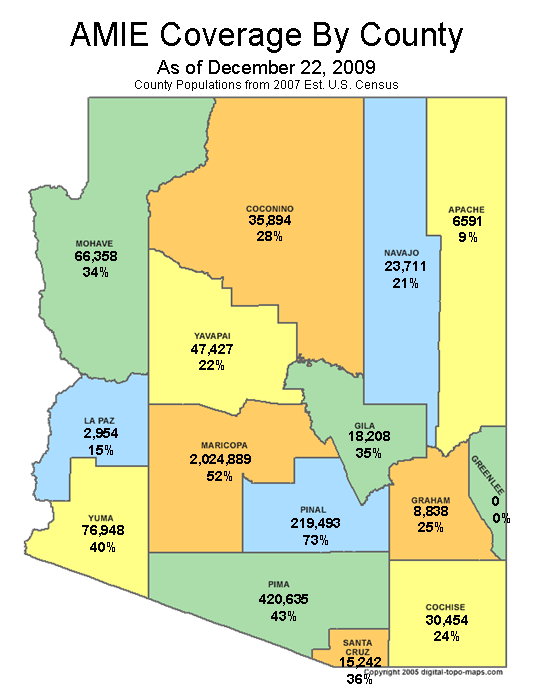After about one year of development and testing, the Arizona Medical Information Exchange (AMIE) Proof of Concept was launched on September 29, 2008. The Proof of Concept ended on December 29, 2008, but AMIE continued to operate through November 2009.
The AMIE Proof of Concept enabled 39 AMIE certified and credentialed AHCCCS registered clinicians to identify patients, locate their relevant medical information, and view individual patient records.
The "proof of concept" included:
- Hospital Discharge Summaries (from Maricopa Integrated Health Systems, St. Joseph’s Hospital and Medical Center, and selected Banner Health facilities)
- Laboratory Test Results (from Sonora Quest Laboratories)
- Medication History (from Managed Care Pharmacy Consultants)
These "starter" record types were identified by clinicians as being of the highest value with respect to records that could be made available through the HIE. Although the sites and users were limited during the "proof of concept," AMIE was designed and built to support a state-wide expansion if called upon.
Starting February 1, 2009, the AMIE Behavioral Health Expansion began. AHCCCS, working with the Division of Behavioral Health Services (DBHS) from the Arizona Department of Health Services (ADHS), and the Regional Behavioral Health Authorities (RBHAs), added behavioral health medication information to the AMIE medication histories, and approximately 10 behavioral health care providers to access the information available through AMIE using the AMIE web-based Viewer.
While AMIE was in operation, we continued to add users, and accumulate data.
Additional data types were made available by Banner Health System. The
following tables show the types of records, sources, volumes and number and
regional distribution of patients in the MPI.
Over 3.1M patients are in the AMIE Master Patient Index.
There are over 7.6M records available through AMIE:
|
|
|
| Banner Baywood Medical Center | 58,334 |
| Banner Desert Medical Center | 73,095 |
| Banner Estrella Medical Center | 34,014 |
| Banner Gateway Medical Center | 22,077 |
| Banner Heart Hospital | 16,135 |
| Managed Care Pharmacy Consultants, Inc | 1,031,172 |
| MIHS | 11,936 |
| SJHMC | 27,247 |
| SonoraQuest | 6,349,858 |
| Grand Total | 7,623,868 |
AMIE currently can provide access to 10 different types of records:
|
|
|
| Cardiac Study/Report | 6,875 |
| Consultation | 54,546 |
| Discharge Summary | 109,431 |
| Emergency Report | 2,782 |
| History and Physical | 38,124 |
| Lab Report | 6,349,858 |
| Medication History | 1,031,172 |
| Operative Report | 23725 |
| Procedure Note | 262 |
| Study Report | 7,093 |
| Grand Total | 7,623,868 |
